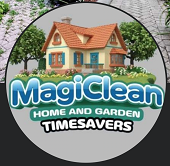Algae to Fly Excessive on the Ignis Area Mission – The Unconventional Gardener
When the subsequent Axiom non-public spaceflight launches (no sooner than April 2025), it is going to be carrying ESA reserve astronaut Dr Sławosz Uznański. He’ll spent round two weeks on the Worldwide Area Station (ISS) for his mission, referred to as ‘Ignis’ after the Latin phrase for fireplace, symbolising the spark igniting a brand new period in Poland’s house endeavours. Ignis contains 13 experiments within the fields of know-how, biology, medication, and psychology, ready by Polish scientists and engineers.

In a type of experiments, YEAST TARDIGRADEGENE, researchers from the College of Szczecin, Adam Mickiewicz College in Poznań and the College of Silesia in Katowice will check the survival of genetically modified yeast (enriched with tardigrade protein) in microgravity circumstances, exploring its potential to be used as biofactories in house journey and on Mars or the Moon.
And in one other, Extremo Applied sciences will examine the power of extremophilic volcanic microalgae to outlive and adapt in house circumstances, which might be necessary for future house missions and purposes in closed circuit and house medication.
The SPACE VOLCANIC ALGAE (SVA) experiment is led by Ewa Borowska, founder and CTO of Extremo Applied sciences and a doctoral candidate on the College of Warsaw.
“The intention of our experiment is to ship [extremophilic] microorganisms – in our case, microalgae from volcanic areas with distinctive adaptive options – and check them for resistance in circumstances of microgravity and cosmic radiation. This may enable us to higher perceive their functioning below many stress elements on the similar time. As well as, the first objective of our mission is to analyze oxygen manufacturing, because the proposed algae exhibit intensive photosynthesis, and thus produce oxygen and take up carbon dioxide.”
Ewa Borowska

The chosen algae are multi-taskers that can be utilized for a lot of functions – along with producing oxygen and different (dietary or medicinal) substances, for instance, they is also used to get better metals from the lunar or Martian regolith, or in sewage therapy.
“Algae might be one of many key elements of closed loop methods on future house stations and house bases. They’re quickly rising organisms with low vitality and dietary demand. They don’t seem to be solely the premise for oxygen manufacturing and carbon dioxide conversion, however their biomass can be a possible fertiliser for vegetation, meals for easy types of invertebrates and, lastly, a further complement to the astronauts’ weight loss program.
As well as, the examine of recent species of algae, such because the one we suggest, might exhibit the manufacturing of fully new metabolites and vitamins that can be utilized in varied fields, together with house medication and biotechnology.”
Ewa Borowska
Sławosz Uznański might be flying as a Mission Specialist on Axiom 4 (AX-4), alongside Commander Peggy Whitson, Mission Pilot Shubhanshu Shukla of India and Mission Specialist Tibor Kapu of Hungary.

References
N° 68–2024: ESA and Poland reveal ‘Ignis’ as title of Polish mission to Worldwide Area Station, 2 December 2024
Polish algae experiment to be carried out on ISS, 12 June 2024
Polskie eksperymenty będą realizowane na pokładzie Międzynarodowej Stacji Kosmicznej, 14 Could 2024
Learn in regards to the Turkish plant experiments that flew on the AX-3 mission in January 2024:
And don’t neglect you will get all the newest astrobotany information direct to your inbox, by signing up for the Gardeners of the Galaxy Mission Report publication!
Until in any other case acknowledged, © Copyright Emma Doughty 2024. Revealed on theunconventionalgardener.com.
If you happen to loved this publish, please contemplate supporting my work. I’ve a subscriber-only Patreon for house plant fans, or you would simply purchase me a cup of tea:
Many thanks!




















